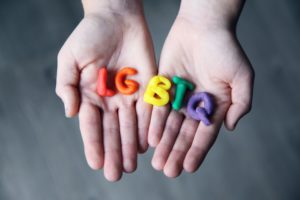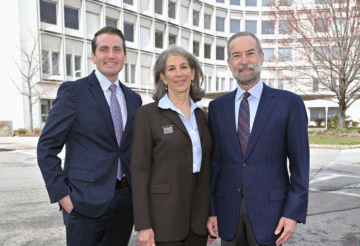
I recently got into a discussion about gender identity and gender roles with someone who was confused over the apparent increase in young people identifying with issues such as being transgender, gender fluid, or gender nonconforming. This person was unclear as to why there was such an increase in the visibility of such individuals and what it meant—were there really this many transgender people in our communities? Was there a big increase? Were they just invisible before? Was the tendency towards gender fluidity and breaking down norms going to turn out to be just a phase?
Even as a psychologist, and one who has experience with LGBTQ issues, it has, indeed, been hard to keep up with the changing vernacular, labels, and roles that young people themselves are questioning. Plus, much like gay and lesbian individuals in the 1960s and ’70s, who were “here and queer and won’t disappear,” people who don’t conform to their gender of birth have become more visible and vocal as they fight for rights and supports that gender conforming people get without effort. Federal and state legislation either protecting or excluding such individuals has made headlines in recent years, causing anxiety in those who worry that random men will don dresses and assault girls in bathrooms (not likely, and if someone is going to commit sexual assault, do you think they care about following the rules governed by the sign on a bathroom door enough to wear a disguise?).
I thought it would be helpful to provide a small primer in gender identity, sexual orientation, roles, etc. for those whose heads are spinning as they look at the world in which we currently live.
Most of us are cisgender, the gender we were assigned at birth based on the appearance of our sex organs. We are female or male and we feel female or male. We may be very happy with our bodies or wish we were taller, shorter, thinner, had a smaller nose, etc., but we see our bodies as ours, as fitting who we are and who we present to the world, and we go through our days without much thought about our gender.
Some people are transgender, meaning that they feel that their gender identity and their bodies don’t mesh. The medical term for this is “gender dysphoria,” and these people feel that their bodies are the wrong bodies, that what they see in the mirror is not how they perceive themselves internally. They can feel very troubled by this and work to cover up their secondary sex characteristics (breasts or curvy figures, facial hair, deep or high voices) to appear more like the opposite gender. Some trans people receive medical intervention and surgery, but some don’t, and simply present publicly as the gender that feels more comfortable for them. Trans people may encounter discrimination when it comes to trans healthcare so it’s important for a healthcare advocate to speak for equal access to medical and healthcare services.
I am not sure if there is a true increase in those who identify as transgender. It is probably too soon to tell, as trends will need to be studied. It is certainly likely, however, that with more acceptance and as trans people as a group fight for their rights, we are seeing more so it appears there are more. In addition, as medical treatment continues to improve, we may see more people actually pursuing such treatment rather than living as their chosen gender without completely transitioning medically.
A person who is female at birth and transitions to male is called a transgendered male and vice versa. It should be noted that “transsexual” is considered an archaic term and not used anymore. Some individuals choose to use pronouns such as they/them, and others use pronouns that have been recently created such as hir or ze when they identify as “gender queer” or nonconforming or otherwise don’t feel the binary system works for them.
It bears noting here, for those who are not clear on this, that gender identity and sexual orientation are two different things. A woman can be firm in her female identity and be either straight or lesbian, or she could be transgender and also be attracted either to males or females, or be bisexual or pansexual (attracted to both, or attracted to any gender, including trans people).
I do think, however, that there is an increase in those who identify as nonconforming or gender-fluid. I also think that these labels create some of their own problems, but that may be a topic for another column (in an effort to drop labels, new labels can sometimes be just as constricting). I applaud the adolescents of today for questioning gender roles and identity as well as sexual orientation and what it means to be straight or gay. These are conversations that have been a long time coming, with women in the workforce for many years, fathers doing more housework and childcare than generations before, clothing styles running the gamut between traditionally gendered to more androgynous and back and forth with fluidity, gay marriage being legalized and changing what we think about gender roles in marriage and who’s entitled to be in the open as a couple in the first place, etc. As adolescents search for identity in general, many are looking at their gender identity and saying, “Why must I … ?” Fill in the blank. If I dress femme one day and butch the next does that make me gender fluid or just searching for the identity that feels right for me?
The #MeToo movement has empowered women to speak up against abuse and manipulation, but the flip side of that coin is that it can define women as victims, with men as predators, and take away some of our self-determination as women, causing young men, particularly more sensitive ones, to want to cast off the privilege of patriarchy. Some girls become frightened when their sexuality rears its head at puberty, and they feel conflicted, while female celebrities prance on stage nearly naked, flaunting their sexuality. Every day there’s another accusation of male predatory behavior towards women, presumably due to women’s sexual attractiveness. I don’t think it’s coincidence that, as these issues hit the news more and more, we have more young women balking at the gender roles they feel don’t fit them and struggling to find a label that does. My guess is that some of these young people will turn out to be, in adulthood, trans or somehow gender nonconforming, and some will not. Indeed, in the past, we considered it less troubling psychologically when a girl expressed the desire to dress, act, or even be a boy, because of the benefits of being male in our society, than if it was a boy expressing a wish to be a girl. Now everything we thought we knew about transgendered individuals is being questioned. Not a terrible thing, but certainly confusing to those dealing with adolescents who not only try on different hats in general (“I’ll be a poet, no, a dancer, no, an accountant, no, a plumber….”) but are now also questioning why gender identity is a binary system. What’s important is that they figure out what’s right for them.
Some important facts: trans individuals are more in danger of being assaulted than of assaulting others or causing those much-feared problems in public restrooms. Trans women, in particular are often victims of violent crimes, and trans women of color are the most at risk. This is especially true as many are disowned by family, find themselves floating, and become sex workers, homeless, or otherwise in precarious situations. Some numbers indicate that trans individuals are more than three times more likely to suffer police violence, and more than twice as likely to suffer some form of physical assault in general. In many places it is still okay to discriminate against trans people in a way that would not be tolerated against any other marginalized group. A staggering on third to one fifth of people with gender dysphoria attempt suicide.
As for gender identity in general: in Europe one in 30,000 males and 1 in 100,000 women seek gender reassignment surgery. The estimate in the US is that about 0.6% of the population identifies as trans, whether or not they have surgery. Children tend to start exhibiting gender-congruent behaviors in preschool; children as young as two or three will shun peers who don’t “fit the mold,” meaning that from a very young age children who don’t conform risk social stigmatization. However, this trend may be changing as young people are open to more ways of self-expression and if stores stop separating the toy aisles into blue cars and sports equipment and pink dolls and dress-up sets.
What is clear is that the way we see gender is changing. While most people don’t choose to change their gender, many will choose to express their gender in various ways that may be different from what we are used to. Many young people are embracing their androgynous sides and questioning what society tells them is acceptable. To me, questioning convention always carries some risk but also the potential for positive changes. We shall see where we land.
Barbara Kapetanakes, PsyD. practices psychotherapy in Sleepy Hollow.






